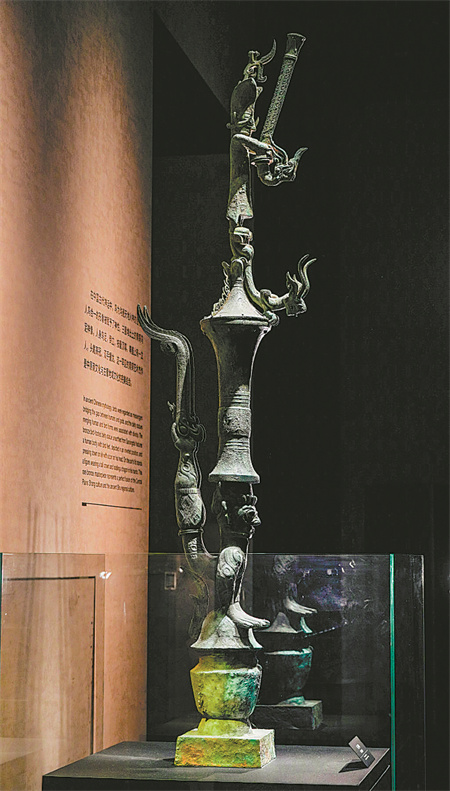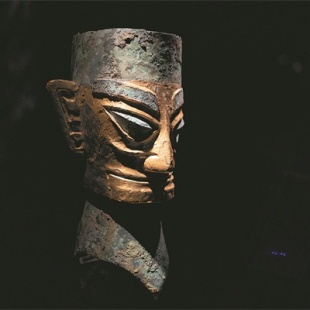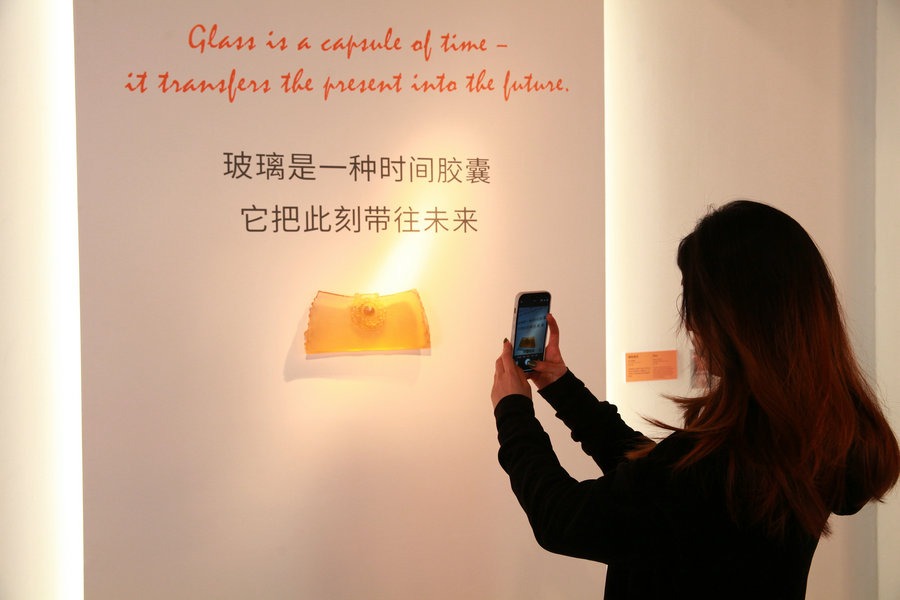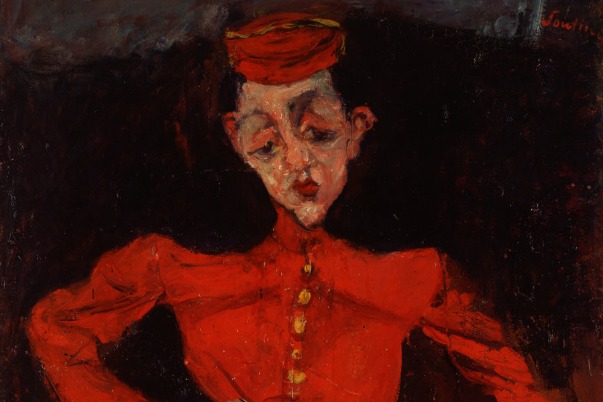More than just a pretty face
While the main attractions of the most Sanxingdui exhibitions are uniquely vivid, exotic bronze masks, there is a greater story of regional integration to be told, Zhao Xu reports.


Crypt clues
And when it comes to being fantastical, few things that have ever been unearthed from Sanxingdui could beat two grand bronze masks.
When the first one, measuring 138 cm in width and 65 cm in height, was lifted out of a pit back in 1986, its size and arched form had, for a few brief moments, allowed archaeologists to think that it was the backrest of a chair. In 2021, a similar-sized bronze mask was found in a nearby pit that has also yielded what's proved to be the left ear of the previous one, best noted for its remarkable pair of eyes.
Measuring at 3.5 cm in diameter, the round pupils of the eyes extended outward for nearly 17 cm to form two cylinders that look like gun barrels.
"In the land of Shu there once lived a ruler named Cancong who had protruding eyes and who made himself a king. Upon his death, he was laid to rest in a stone coffin, and those who came after him took up the practice," went the lines from a 4th-century book Huayang Guo Zhi (The Chronicles of Huayang), considered the oldest extant gazetteer, focusing partly on the land of Shu.
Hu notes that, in 1986, when archaeologists looked at the giant mask, they thought: "That's it!"
Thirteen years earlier in 1973, renowned Chinese archaeologists Tong Enzheng published his seminal study on the stone coffins built by people inhabiting the upper reaches of the Minjiang River, one of the major waterways that had functioned as a transportation route between the Chengdu Plain and the areas to its north and northwest.
"It is possible that this legendary figure named Cancong had led a major population inflow into the Chengdu Plain, where he founded the ancient kingdom of Shu," says Hu. "And this probably would have taken place around 2800 BC, the starting time attributed to Guiyuanqiao culture, the earliest Neolithic culture found on the Chengdu Plain, the site of which is a mere 16 km north of Sanxingdui."
"By the time the Sanxingdui civilization emerged, around 1600 BC, the kingdom had relocated multiple times, leaving behind traces across the Chengdu Plain," says Hu. "Sanxingdui was the capital when the kingdom was at its height."
Archaeological digs on the Sanxingdui site, measuring 12 square kilometers in total, have revealed a trapezoidal city, with four walls enclosing an area of 3.6 sq km, similar in scale to the inner city of the onetime Shang Dynasty capital in what is modern-day Zhengzhou, Central China's Henan province.
Forty meters wide at the base and 20 meters at the top, the remaining sections of Sanxingdui's city wall today serve as powerful reminders of the glory in which the kingdom was once bathed. In fact, the very name of the site and the culture — Sanxingdui, or Three Star Mounds — came from the remains of three, closely situated wall sections that had appeared to their discoverers as earth mounds.





































